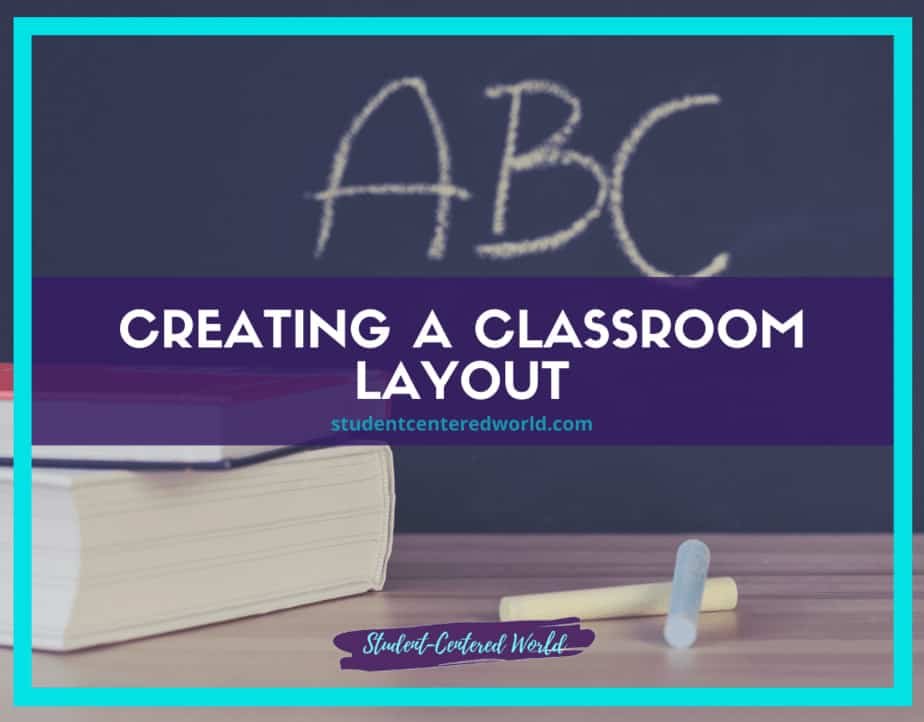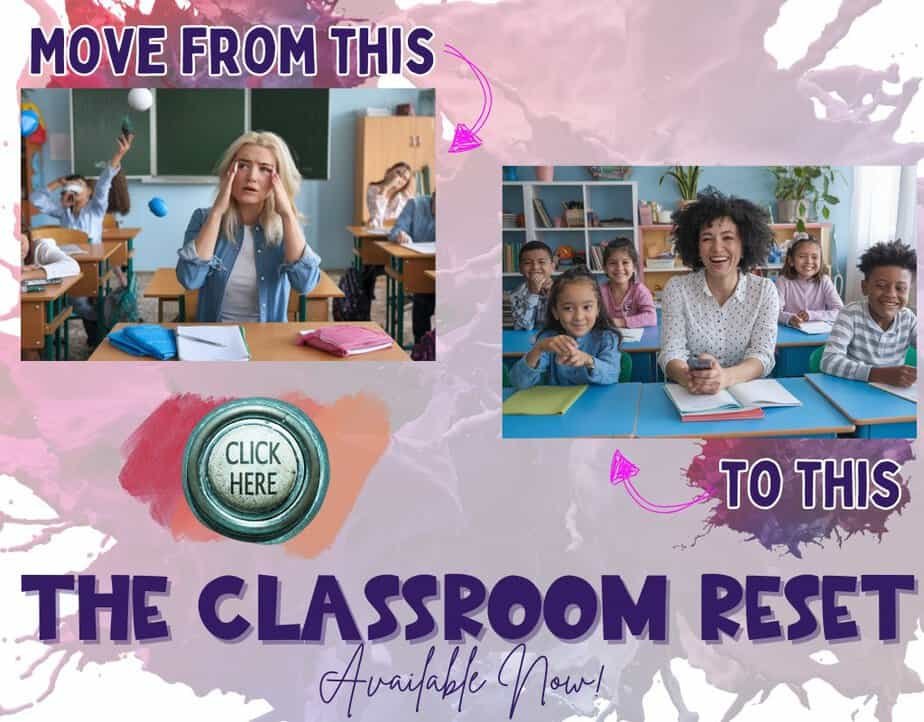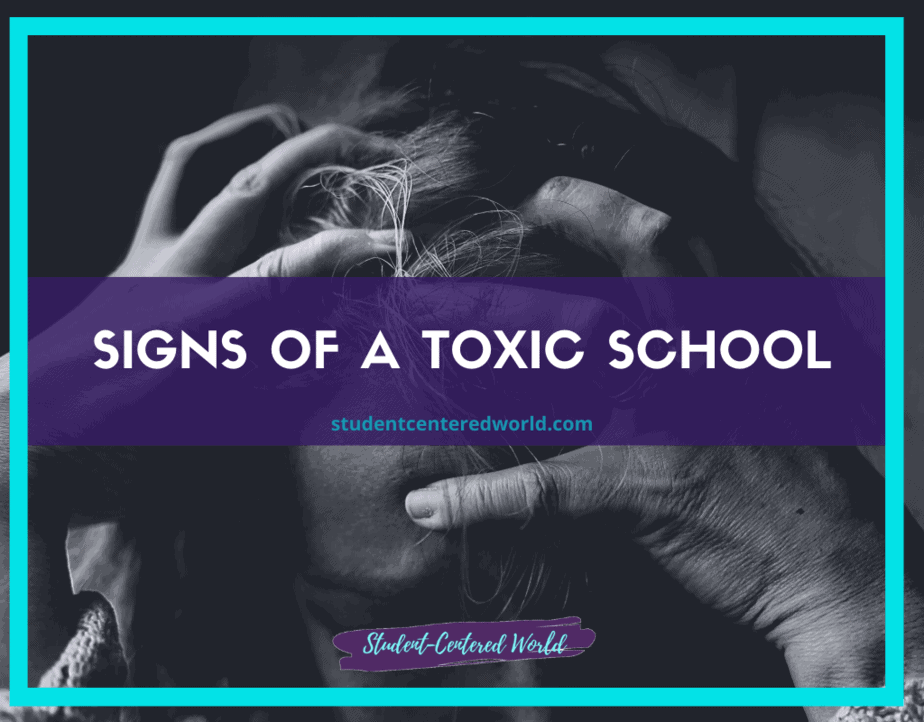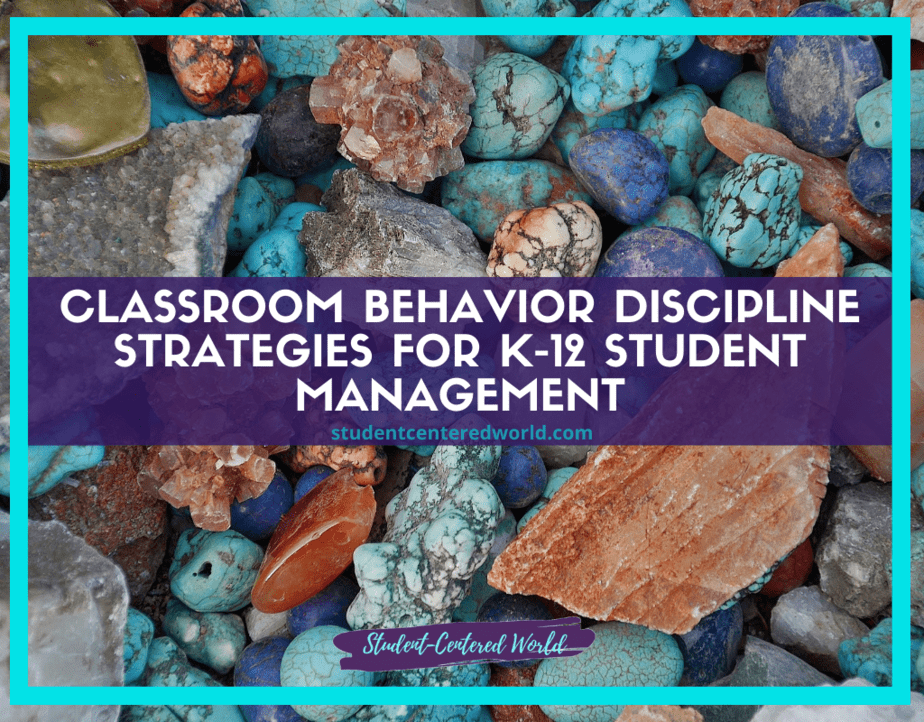Top Classroom Management Techniques for Effective Teachers
One of the biggest challenges plaguing teachers in the classroom today is developing (and implementing) classroom management techniques that actually WORK. The amount of inappropriate behavior and classroom management issues that we are currently seeing is at an all-time high. The National Center for Education Statistics (NCES) reported that 87% of schools reported that the COVID-19 pandemic negatively affected classroom behaviors, student learning, and social-emotional development.
This disruptive behavior is making us crazy. It’s so hard to keep a positive attitude when it feels like your entire class is struggling with previous best practices. Effective teachers are questioning their careers and first-year teachers feel like they are drowning. Classroom rules feel useless and lesson plans are constantly getting derailed by student behavior.

This is leading everyone struggling to find classroom management techniques that encourage good behavior and a positive classroom culture, yet also setting boundaries within the learning environment to see student achievement skyrocket.
Easier said than done?
The best classroom management strategies that worked just a few years ago are null and void with students today. We simply have a different student in front of us now. It’s important to find an effective way to meet them where they are, but it’s like no one is talking about what that looks like.
Build positive relationships!
Keep them engaged bell to bell!
Use a class reward!
Sound familiar?
These overused suggestions do not help set expectations for successful classroom management…they merely shame even veteran teachers into (falsely) thinking they cannot control their classrooms like successful teachers are.
And THIS, friends, is what is chasing people out of our profession.
The classroom has brought us challenges every year since there’s been public education. However, the support you receive to overcome these challenges is what matters. Having someone help walk you through effective classroom management strategies (AND be willing to troubleshoot with you) is the best way to grow.
Why are most of us missing this piece?!
The classroom setting for individual students
It’s no secret that struggling students are also missing the social skills we have seen in students past. The learning process is different, students’ attention is different, even effective positive reinforcement is different. We know we want a positive classroom environment, but when we’re seemingly struggling for students’ respect because they know that the authority figure of your school won’t follow through with effective discipline, it feels like our classroom expectations are just thrown out the window.
It doesn’t matter if you teach younger students, middle school, or are a high school teacher: having a classroom management strategy that is intertwined with effective classroom management systems THAT WORK for this generation of students is an absolute necessity in this climate for new teachers and seasoned teachers alike.

Subject areas don’t matter. Focusing on students’ hard work and effective classroom procedures and different strategies, sprinkled with the powerful tool of teacher-student relationships is the only way you will have great success nipping such behavior and making class time effective again (just like it used to be).
The Power of Group Work and Small Groups
One effective strategy is to use teacher-tested classroom management strategies that have been proven to work across different grade levels. For example, incorporating group work and small groups into lessons can foster student engagement and encourage prosocial behavior. When students work together, they develop leadership skills and learn to communicate effectively, which are essential for their overall growth. However, it’s important to monitor group work closely to ensure that all students are actively participating and staying on task.
Assigning clear roles within groups, such as a leader, recorder, or timekeeper, can help distribute responsibilities and keep everyone accountable. Providing rubrics or guidelines for collaboration ensures that students understand expectations and work productively. Regularly rotating group members also allows students to interact with diverse peers, building empathy and teamwork skills.
By combining structured group activities with thoughtful oversight, teachers can create a collaborative learning environment that promotes both academic and social development.
Connecting with Students
Another key component of effective classroom management is being able to connect with students on a level that grows their trust in you. Learning students’ names on the first day of class and using positive feedback to acknowledge their efforts can go a long way in creating a positive classroom culture. Positive phone calls home or raffle tickets for good behavior are simple things that can make a big difference in motivating students.
Additionally, using humor and positive body language can help teachers connect with their students and make the learning experience more enjoyable. Taking time to understand students’ interests, backgrounds, and challenges shows that you care about them as individuals. Celebrating their achievements, both big and small, fosters a sense of belonging and encourages them to strive for success.
Building these connections not only improves behavior but also creates a supportive environment where students feel valued and inspired to learn. By prioritizing relationships, teachers can cultivate a classroom atmosphere rooted in mutual respect and collaboration.
The Role of Professional Development
Professional development is also critical for classroom teachers, especially those new to the teaching profession. Many first-year teachers feel overwhelmed by the demands of managing a classroom, and without proper support, they may struggle to implement effective management techniques. Schools should provide ongoing training on evidence-based frameworks and practical classroom management techniques to help teachers develop their classroom management skills.

This support can make a significant difference in a teacher’s teaching career and help them feel more confident in their ability to handle behavior issues. Mentorship programs, peer observations, and collaborative workshops can further enhance their growth. By investing in professional development, schools empower teachers to create positive, productive learning environments that benefit both educators and students.
Establishing Consistent Daily Routines
At the beginning of the year, teachers should also focus on creating a well-managed classroom by establishing consistent daily routines. This includes setting aside time for hands-on activities, free time, and whole class discussions. For example, elementary teachers might use a bulletin board to display classroom rules and student progress, while high school teachers could use a seating chart to encourage student focus. These strategies help create a structured environment where students know what to expect and can thrive.
Incorporating morning meetings or warm-up activities can set a positive tone for the day, while clear transitions between tasks minimize downtime and keep students engaged. Visual schedules or timers can help younger students understand the flow of the day, while older students benefit from agendas or goal-setting sessions. Regularly revisiting and reinforcing routines ensures they become second nature, fostering independence and accountability.
By prioritizing organization and predictability, teachers can create a calm and productive learning space that supports academic success and social-emotional well-being.
Keeping Students Engaged with Hands-On Activities
One of the most effective classroom management tips is to use a variety of teaching styles to keep students engaged. For instance, incorporating hands-on activities and student interest into lessons can make even the most difficult assignment more manageable. Teachers should also be mindful of their teaching style and adapt it to meet the needs of their students. For example, some students may respond better to visual aids, while others may prefer group work or independent study.

Integrating technology, such as interactive whiteboards or educational apps, can also cater to diverse learning preferences. Rotating between lectures, discussions, and creative projects ensures that lessons remain dynamic and inclusive. Additionally, providing choices in how students complete assignments empowers them to take ownership of their learning. Regularly seeking student feedback on teaching methods can help educators refine their approach and address individual needs.
By embracing flexibility and creativity in their teaching, educators can create an engaging and supportive environment that fosters both academic growth and a love for learning.
Reinforcing Positive Behavior through Classroom Management Techniques
Another good idea is to use positive behavior reinforcement to encourage better student behavior. This can include giving students raffle tickets for completing tasks or demonstrating prosocial behavior. At the end of the week, teachers can hold a drawing for small prizes, which can motivate students to stay on task and follow classroom rules. Additionally, positive phone calls home can reinforce good behavior and build strong relationships with parents.
Publicly acknowledging students’ efforts through praise or a “Student of the Week” award can also boost morale and create a positive classroom culture. Incorporating peer recognition, where students celebrate each other’s achievements, fosters a sense of community and mutual respect. Teachers can also use visual charts or progress trackers to help students see their growth and stay motivated.
By consistently reinforcing positive actions, educators can create an environment where students feel valued and inspired to maintain good behavior, ultimately leading to a more productive and harmonious learning atmosphere.
Fostering Responsibility in High School Students
For high school classes, teachers should focus on fostering a sense of responsibility and accountability among students. This can be achieved by setting clear expectations for academic achievement and classroom behavior. High school students are more likely to respond positively when they understand the importance of classroom management and how it contributes to their success.
Teachers should also encourage active participation and provide opportunities for students to take on leadership roles in the classroom. Incorporating real-world applications and project-based learning can make lessons more relevant and engaging. Offering constructive feedback and celebrating achievements, both big and small, helps build confidence and motivation. Creating an environment where students feel comfortable expressing their ideas and asking questions promotes critical thinking and collaboration.
Additionally, integrating technology and digital tools can prepare students for future academic and professional challenges. By modeling respect, empathy, and a growth mindset, teachers can inspire students to take ownership of their learning and develop the skills necessary for lifelong success.
Creating a Nurturing Environment for Elementary Students
Elementary teachers, on the other hand, should focus on creating a nurturing and structured environment. This includes using consistent daily routines, clear rules, and positive feedback to encourage good behavior. Elementary students thrive in a well-managed classroom where they feel safe and supported. Teachers should also use hands-on activities and group work to keep students engaged and make learning fun.
Incorporating visual aids, storytelling, and interactive technology can further enhance understanding and retention. Building strong relationships with students and fostering a sense of community is equally important, as it helps children feel valued and motivated. Encouraging curiosity and creativity through open-ended questions and problem-solving tasks can also stimulate critical thinking. Additionally, providing differentiated instruction ensures that each child’s unique learning needs are met.

By balancing structure with flexibility, teachers can create a dynamic and inclusive classroom where every student has the opportunity to succeed and grow academically, socially, and emotionally.
Maintaining Classroom Order
One of the most important aspects of effective classroom management is maintaining classroom order. This can be achieved by setting clear expectations, using effective communication, and addressing behavior issues promptly. Teachers should also be proactive in identifying potential challenges and implementing strategies to prevent disruptions. For example, if a student is struggling with a difficult assignment, the teacher can provide extra time or additional support to help them succeed. Establishing consistent routines and procedures helps students understand what is expected of them, reducing confusion and misbehavior.
Nonverbal cues, such as eye contact or proximity, can subtly redirect off-task behavior without interrupting the flow of the lesson. Building positive relationships with students fosters mutual respect and encourages them to adhere to classroom norms. Additionally, creating a safe and inclusive environment where students feel heard and valued minimizes conflicts and promotes cooperation.
By combining structure with empathy, teachers can maintain a balanced and orderly classroom that supports both learning and personal growth.
Continuous Improvement in Classroom Management
Finally, it’s important to recognize that classroom management is an ongoing process. Teachers should regularly reflect on their teaching experience and seek out new classroom management strategies to address emerging challenges. This might include attending professional development workshops, collaborating with colleagues, or researching evidence-based frameworks. By continuously refining their classroom management skills, teachers can create a positive and productive learning environment for their students.
The challenges of classroom management in today’s educational climate are significant, but they are not insurmountable. By starting the school year on the right foot, building strong relationships with students, and using effective classroom management strategies, teachers can create a well-managed classroom where students thrive. Whether you’re teaching elementary students or high school classes, the key is to meet students where they are and provide the support they need to succeed.
With the right approach, teachers can overcome behavior issues, foster student engagement, and create a positive classroom culture that promotes academic achievement and personal growth.
This article was originally posted on April 26, 2022.







